(CNN) — A treasured memory from a flight that started a new life abroad. Tangible proof of how far someone has come from humble beginnings. A perfect book mark. A memento from travels with a loved one. A reminder of a flight turned around on September 11, 2001.
For many travelers, a paper boarding pass from an airline is a lot more than a set of directions to help you get to your airplane seat on time.
Emirates Airlines announced earlier this year that they are getting rid of physical boarding cards for some of their customers, prompting the question of whether other airlines will follow suit. Whether this is the beginning of the end of the physical boarding card is yet to be seen, but the mere idea of it made hundreds of CNN readers write to us to share why they save old boarding passes and the stories behind them.
See how the paper boarding pass has changed over the decades, and read why so many people have saved boarding passes for as long as 50 years.
Fasten your seatbelts and prepare for takeoff as we explore the history of the boarding pass.
1950s

The ticket jacket
From the end of the Second World War until the late 1960s or early 1970s, the flight ticket was often placed in a small folder, or a ticket jacket, also known as a ticket wallet. For some airlines, the ticket jacket also doubled as a boarding card, travel industry analyst Henry H. Harteveldt said.
The airline employee would write the passenger’s name, the flight number and three-letter airport code for the passenger’s destination on the outside of the jacket. Seats during this time were rarely pre-assigned; the passenger picked a seat when they entered the aircraft, explains airline historian David H. Stringer, so the boarding card would not include a seat number.
1960s

Seat assignment and sticky tabs
In the 1960s, as larger planes were introduced, assigned seating became more standard, Stringer said. Airlines often had a chart for each aircraft with little sticky tabs representing each seat, and once the passenger had chosen their desired seat, the tab with that number would be removed from the chart and placed on the passenger’s ticket jacket.
1960s

A separate boarding pass
Boarding passes as a card separate from the ticket jacket became popular in the 1960s. These passes were often perforated cards with tear-off tabs, which the flight attendant collected during boarding, Stringer said.
1970s

Computer printed passes
Starting in the mid-1970s, computerization of ticketing systems allowed some airlines in the US to introduce the capability for boarding passes to be printed at their city ticket offices, and soon also by travel agencies, Harteveldt said. This meant boarding passes started to look a bit different because they had to be designed to run through a computer printer.

Southwest’s plastic boarding passes
For at least 30 years, Southwest Airlines’ boarding passes were made of plastic. The airline does not assign seats, so there was no need to write or print a seat number on the pass.
Passengers picked up their numbered and color-coded plastic pass, which divided them in boarding groups for more efficient boarding, at the departure gate in an airport. The cards were then collected as the passengers entered the plane.
Additional security measures following Sept. 11, 2001, led to Southwest starting a gradual retirement of the iconic plastic card in 2002.
1980s

A combined ticket and boarding card
In 1983, tickets with a magnetic stripe on the back were introduced. The magnetic stripe allowed the ticket information to be stored electronically on the ticket itself, doubling as a boarding pass. Magnetic stripe boarding passes require special printers located in the airport, a check-in desk or inside a kiosk. It also needs specific paper stock, according to the International Air Transport Association (IATA).
1990s

Enter the barcode
In the 1990s, some airlines transitioned to scannable barcodes — a one-dimensional design with vertical lines only. In 2005, IATA established a standard for the two-dimensional barcode, which can hold more information by using a more complex pattern.
1990s

Electronic ticketing paves the way for online check-in
The first e-ticket was issued in 1994, and by 1997 IATA had adopted global standards for e-ticketing. In 2008, IATA announced 100% of ticketing was electronic, which meant that airlines no longer needed to produce physical tickets.
Starting in the late 1990s, passengers could check themselves in online and print out a boarding pass at home.
“For years the boarding pass had been the approximate size of the airline ticket,” Harteveldt said, but now the format and design needed to change to be adapted for a home printer.
2000s

Paperless boarding
Continental Airlines started trialing mobile check-in in 2007, the year Apple introduced its first smartphone, and by 2008, the industry agreed on a barcode standard for paperless, mobile passes.
Tech industry analysts from Juniper Research told CNN that they estimate that out of the over 4.6 billion boarding cards that will be issued in 2023, over half (53%) will be mobile, and predicting that this number will grow to 75% by 2027.

What’s next
Emirates Airlines announced in May that it is getting rid of physical boarding passes for some of its travelers, opting for a digital-only version. Is this the beginning of the end for the physical boarding pass?
Travel adviser John Dekker thinks so, and goes even further. “Every airline is going to move through tickets into biometrics,” Dekker told CNN, which would mean no boarding pass would be required at all.
A souvenir, a memento or a
physical memory from a special trip
For those who save their boarding pass as a
memento, the idea that they could be eliminated at
some point may be disappointing.
“[The boarding pass] just adds something to these
memories,” Hartveldt said. “That flight was more than
just another trip on a thing with wings, it was
somehow special.”
We asked our readers if they keep their old, paper
boarding passes from memorable or important trips
as mementos. And, if so, why.
Keep scrolling to read their stories.
Entries have been edited for length and clarity
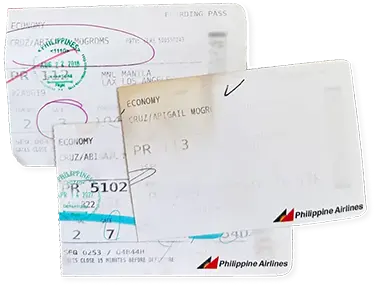
A sense of pride for my parents
Coming from a developing country where travel, especially abroad, is a privilege, it gives a sense of pride. I felt air travel is a luxury because I only got to do it when I started working.
When I was younger, we could only afford road trips. When I started traveling because of work, it also gave my parents a sense of pride. They worked hard to give me a good education. I kept the boarding passes from those trips.
Abi Cruz, The Philippines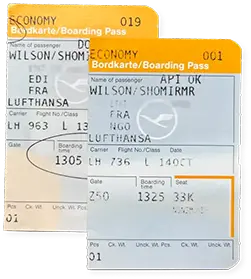
Unexpected far away places
I save the ones from unusual routes, especially those between airports in faraway places that I once didn't anticipate a reason to visit.
I imagine a younger version of me looking at them and wondering, “Why will I be on that flight?”
Shomir Wilson, State College, Pennsylvania, USA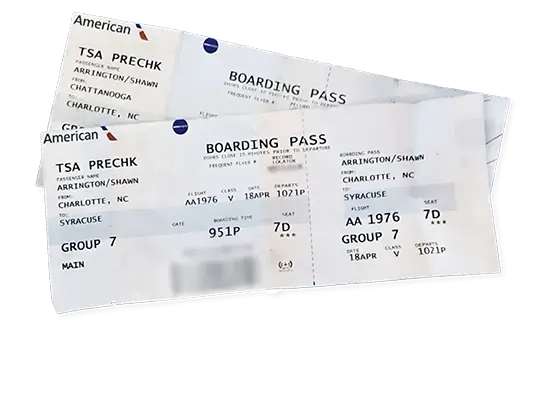
My children’s college campuses
The airline visits to each of my children's college campuses are two of the ones I have saved.
I think looking at those and remembering all the excitement of starting that part of their life journey will be impactful as they grow older.
Shawn Arrington, Chattanooga, Tennessee, USA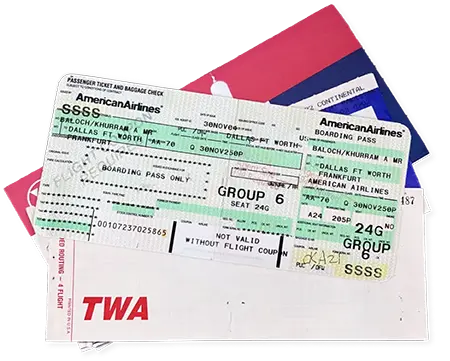
A sense of accomplishment
I collected boarding passes in my early stage of my career because as a Pakistani immigrant to the USA of humble beginnings, it gave me a sense of accomplishment.
When I travel now with my wife and three boys I always opt to print. I love seeing the sense of responsibility in my 14-, 12- and 8-year-old boys as they get to keep it safe, show it at TSA, then again at the gate check in. I let them keep their passports for that too to make sure they learn the protocols of travel so when they grow up to travel alone, I don't need to worry if they will know what to do.
To me it's a literal rite of passage.
Khurram Baloch, Frisco, Texas, USA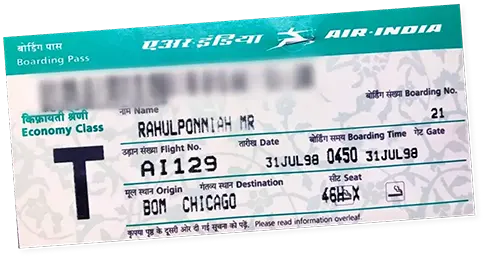
Starting a new life
I still have the boarding pass of the flight I took when I moved to the US as a graduate student about 25 years ago.
An Air India flight, direct from Mumbai to Chicago. It was my first time in the US.
I have been a US resident ever since.
Rahul Ponniah, Acton, Massachusetts, USA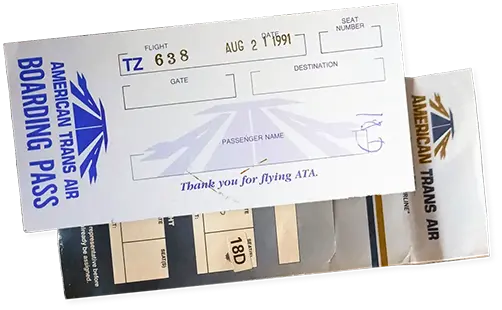
I went to visit my penpal in the United States
I have kept several boarding cards from my first ever trips to the USA from my home in Ireland as a teenager, I went to visit my pen pal and we have been friends for nearly 40 years!
Niamh Coughlan, Donegal, Ireland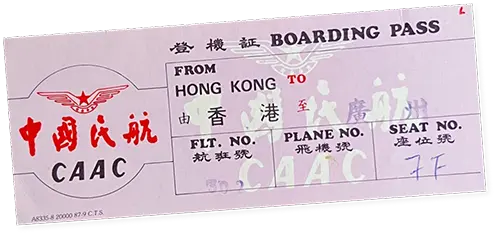
A permanent record of my flights
I have saved more than 1,000 paper boarding passes and paper tickets since my first scheduled commercial flight in 1971.
Over the years, I have been fortunate to have flown scores of aircraft that are no longer in scheduled service, from the DC-3, Electra, 707 and Concorde.
Because of these little paper cards, I have a permanent and verifiable record from each of those flights.
Brian Baum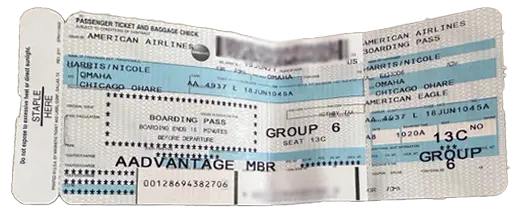
A reminder of my bravery
I kept mine as a reminder of my bravery. I had a terrible fear of flying and took a job that required extensive travel. I started collecting them as a reminder of every time I overcame fear.
Nicole Harris, Omaha, Nebraska, USA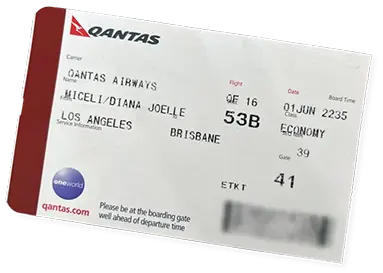
Physical memories of adventures
These are artifacts to me; physical memories that remind me of the adventures I had as a young woman in my twenties who was just trying to figure out who she was.
I keep them to remind myself of all of the hard things that I've done and the transformative growth that I have experienced.
I also save them for this very reason; the world is changing scarily fast. I want my future grandkids to know what life was like before flying cars and AI ruled the world.
Diana Miceli, Rochester, New York, USA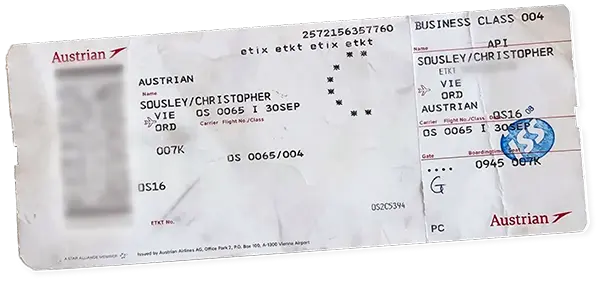
A reminder that I had reached my dream job
I started working in the airline industry in 2013. With the career came the benefits of free or heavily discounted flights.
When I first started utilizing my benefits, I kept every single boarding pass as a reminder that I'd reached my goal of having my dream job.
Christopher Sousley, Tacoma, Washington, USA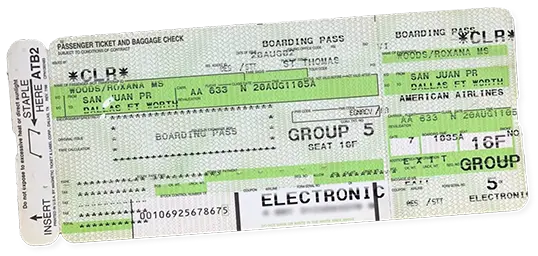
Memories of trips with my grandma
My grandmother took me on our first trip to Europe in 2000, I saved the ticket from the flight…
She took me on many trips over the years and whenever I see the pieces of paper or airline tickets it transports me back to that time and place with her.
She was my favorite person in the world and it always makes me smile.
Roxana Heinz, Missoula, Montana, USA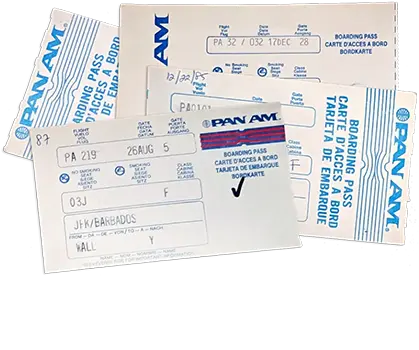
I flew about 350 flights
I have saved all my Pan Am boarding passes from ‘85 to ‘91 when my wife was a flight attendant for Pan Am.
I flew approximately 350 flights.
Jeremiah Wall, Clarksburg, Maryland, USA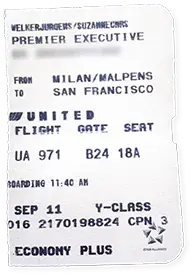
I still have my 9/11 boarding pass stub
I still have my 9/11 boarding pass stub. UA971 Milan/Malpensa to San Francisco, with a stopover at Washington Dulles.
We made it over the UK and then the plane turned back around to Italy.
I had previously saved other boarding passes but threw them out when I moved a few years ago.
Suzanne Welker Jurgens, San Francisco, USWe hope you enjoyed the journey!


